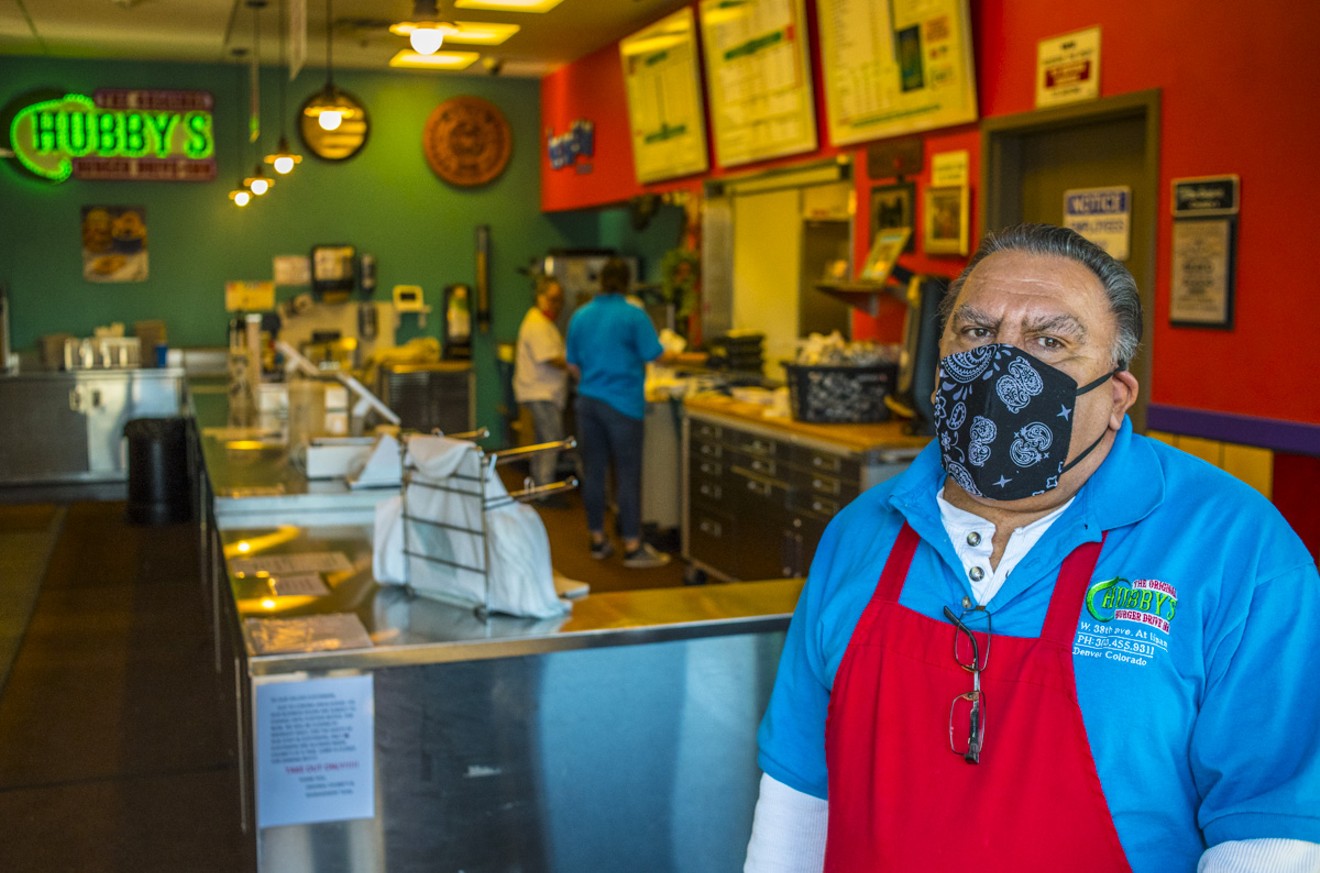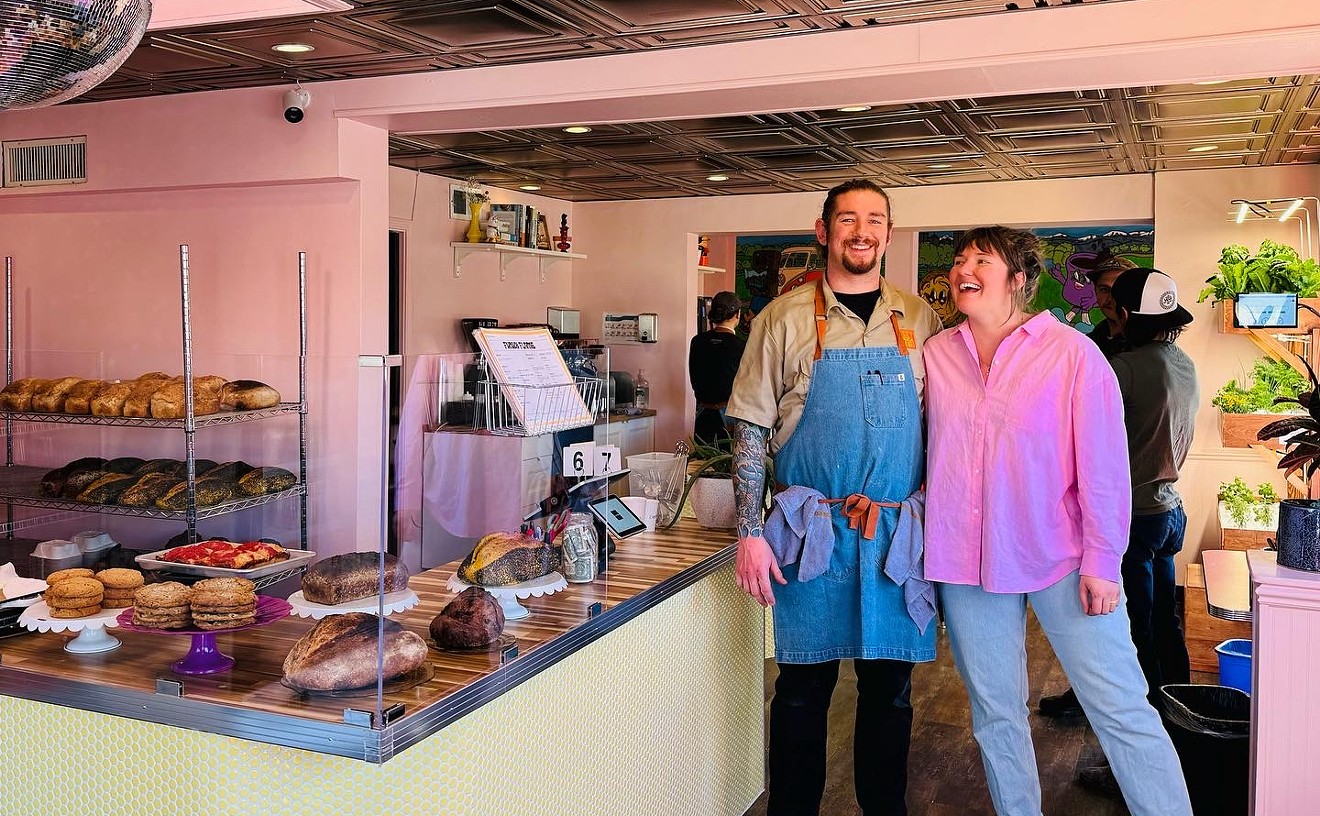What does this mean for restaurants and bars? The main restriction is a reduction to 25 percent capacity, or a maximum of fifty guests, whichever is less, though they'll be able to keep seating groups of up to ten people. Restaurants are also allowed to continue unrestricted seating in permitted areas outdoors as long as parties are kept at least six feet apart and, if they're seated in enclosed areas, those areas are aired out between parties. (Think igloos and greenhouses, and find more Denver outdoor expansion details here.)
But last call moves back to 10 p.m.
The bad news delivered October 27 by Mayor Michael Hancock arrived during a week with multiple restaurant openings planned, including that of the Ginger Pig (4262 Lowell Boulevard), Bellota (3350 Brighton Boulevard), Whole Sol (1611 Raleigh Street), Lime Cantina (30 South Broadway) and the Crock Spot (4045 Pecos Street).
Expanded patios and other creative seating measures kept restaurants afloat during the warm months when indoor seating was restricted to 50 percent, but with cold weather keeping people from wanting to eat outdoors and indoor capacity now even more limited, these latest restrictions come as a real blow to the already-hurting industry.

Bar and restaurant owners want you to be safe and smart so they can return to business as usual.
Mark Antonation
Curt Sims, who just finished converting Gozo, his defunct restaurant at 30 South Broadway, to a new location of Lime Cantina, says that limited capacity was one of the reasons he didn't reopen Gozo after Denver restaurants were allowed to offer on-premises dining in late May. With no patio and a small dining room, operating at 50 percent capacity didn't make much sense for that concept, which had much higher labor costs than Lime. Even so, dropping to 25 percent will make for a rough winter.
"It's all a matter of survival and just getting through this before we can get to anything considered successful," Sims says. He also has a Lime at 500 16th Street, in the Denver Pavilions, where he and other restaurateurs have been making do with outdoor seating and weekend business. "We're basically just pulling down the hatches and riding out the storm," he explains.
The Ginger Pig, which has been a successful Boulder County food truck for the past several years, is making final preparations to open its first brick-and-mortar restaurant on October 28 in the Berkeley neighborhood. According to owner Natascha Hess, "Our food is designed well for takeout; it's what we've been doing from the truck for years. I just think we'll be doing more takeout than we anticipated. But I have a COVID clause in my lease triggered by just this kind of situation — anything less than 50 percent capacity — so that's a big help."
In an attempt to bring more business to restaurants, last month Visit Denver decided to introduce a fall version of its popular Denver Restaurant Week, scheduled for November 13 to 22. More than 160 restaurants have already signed on, and menus just went up on Visit Denver's website on October 26; the event was shaping up to be a boon for eateries and customers alike, with many chefs creating special dishes. Fortunately, many of them are takeout-friendly, since to-go numbers could be much higher than anticipated with fewer in-house seats available.
“Updated COVID-19 safety measures will reduce dine-in seating capacity to 25 percent or max of 50 guests, but restaurants will still be able to offer their full, delicious Denver Restaurant Week menus with great to-go, pick-up and delivery options,” says Richard W. Scharf, Visit Denver's president and CEO. “This is a difficult time for our restaurants, and we hope that the restrictions will improve soon for the holidays. However, Denver Restaurant Week will continue to serve as an opportunity to enjoy our city’s renowned culinary scene while bringing much-needed business to this struggling industry.”
The tightened restrictions are expected to last a minimum of two weeks, since the Colorado Department of Public Health and Environment will need to see lower case numbers over a two-week period before Denver can move down the dial to fewer restrictions.
But in the meantime, as Mayor Michael Hancock noted at the end of his press conference today, "liquor stores remain open."












